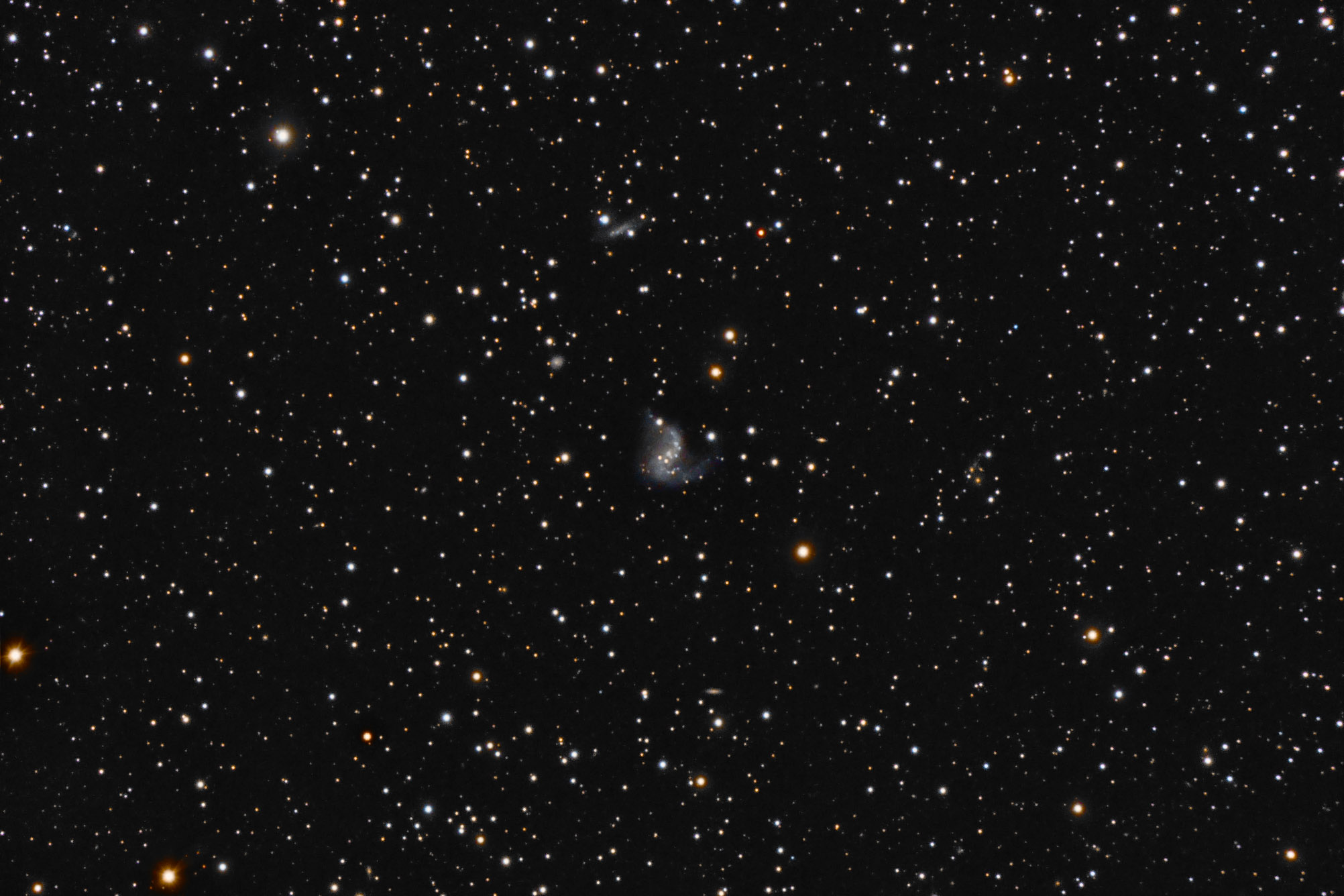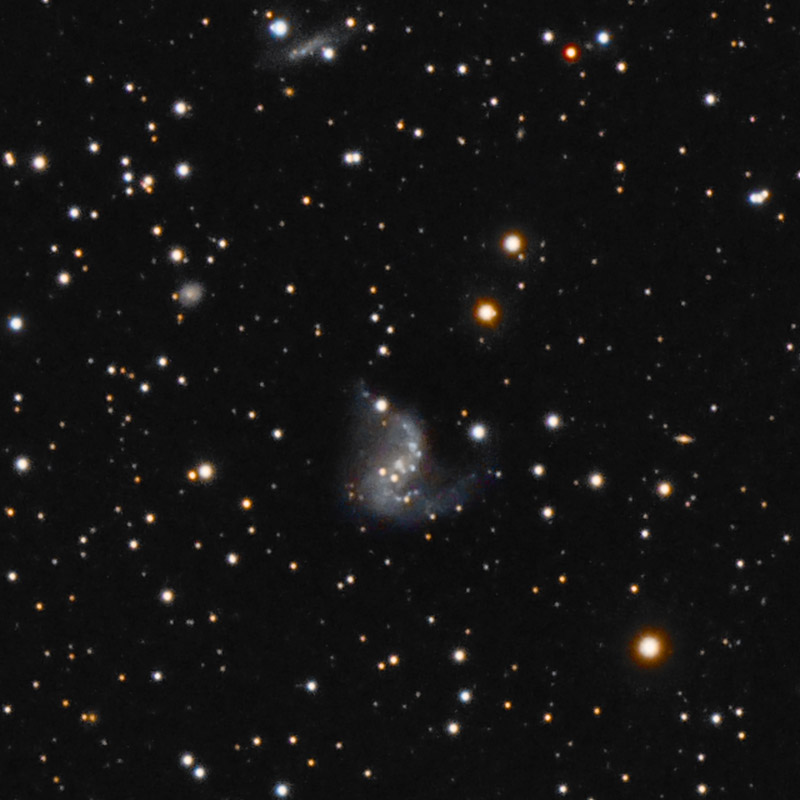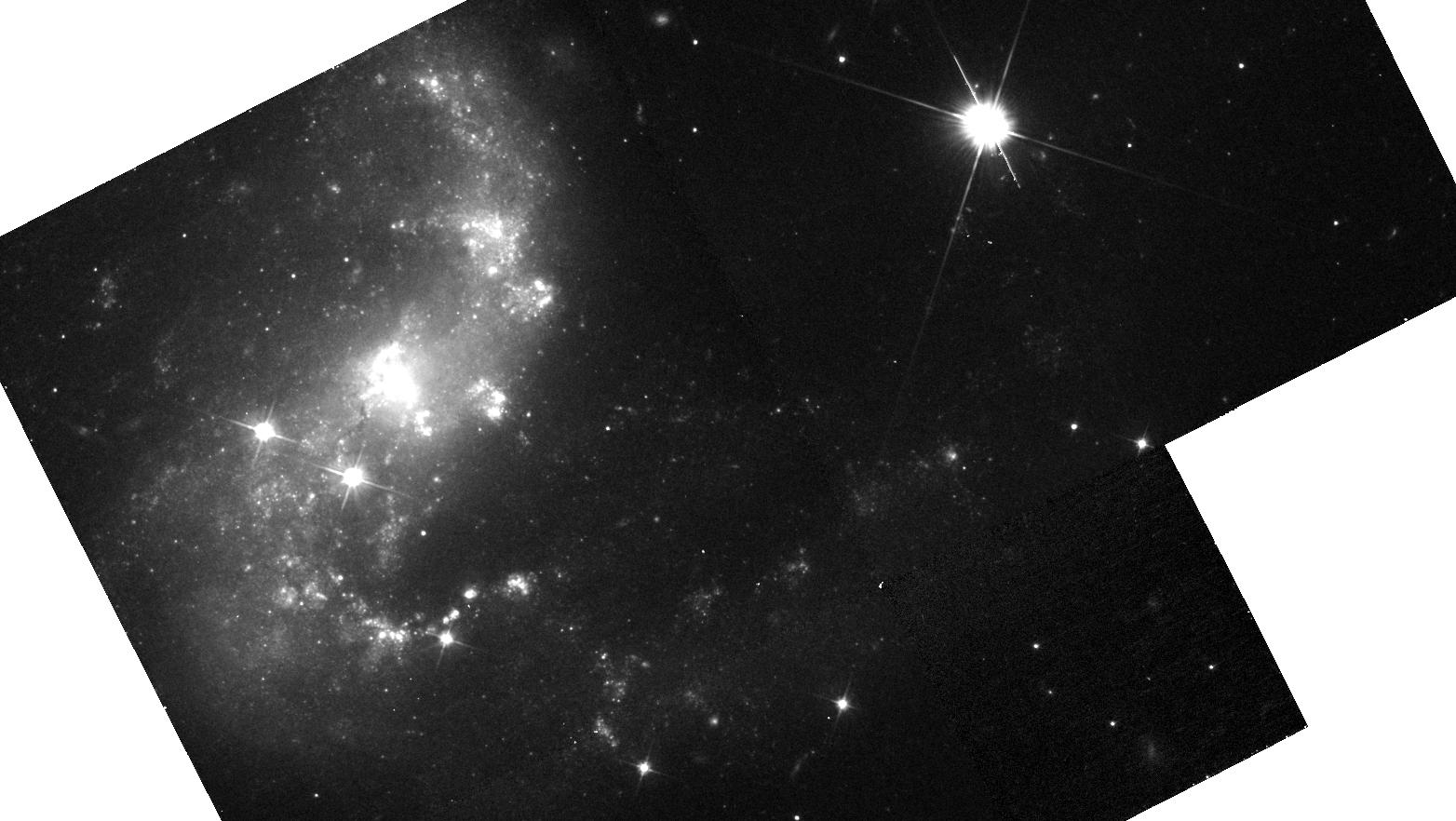Object name: IC1291 IC 1291 is a rather disturbed looking spiral galaxy in southern Draco just north of Lyra. It is classified SB(s)dm? according to NED and SBdm pec by Seligman. Redshift puts it a bit over 80 million light-years distant while a single Tully-Fisher measurement says about 100 million light-years. One paper mentioning it says 85 million light-years though doesn't say how this was determined. Assuming the 85 million light-year figure it is about 52,000 light-years across. It's spiral arms are very different both in visual light and at radio frequencies tracing the non-ionized Hydrogen. Is it naturally this way or the product of an interaction? I found nothing on this but will vote that it has been disturbed by an interaction or something it ate. It was discovered by Lewis Swift on June 5, 1891.
The only other galaxy in the frame with redshift data is the ragged looking one to the north, MCG +08-34-005. It's redshift puts it at 89 million light-years so may be a true companion. Look closely and you'll see it has a very faint extension to the east southeast and a shorter one on the other side running to an orange star. Including these possible tidal features it is some 36,000 light-years long. Using only the obvious bright region it is only 13,000 by 3,000 light-years in size. Include the plumes and it would make the Flat Galaxy's 7:1 ratio test. But it's not in that catalog. NED makes no attempt to classify it. Could it be the cause of IC 1291's odd shape? Seems quite possible to me but then galaxies can just look strange for no known reason.
NED lists IC 1291 as UGC 11283 and MGC +08-34-005 as UGC 11283c. So I naively assumed there must be a UGC 11283a and UGC 11283b but NED says neither are in its data base. Yet A note at NED from the UGC at NED for IC 1291 indicates it is part of a trio of galaxies. One is the MGC galaxy and the other 2MASX J18332904+4917066 the small galaxy about due west 3.8 minutes of arc. NED has no redshift data for it. To me it is likely a very distant background galaxy but then looks can be deceiving.
6.1 minutes south is LEDA 2335645. To me it is a more likely companion than the other. Though it too looks more distant to me. Still it makes a better companion to my eye. Maybe the UGC has a 6 minute cut off and it is just over that? I have no idea. In any case neither of these appear to be UGC 11283 a or b. Closer but fainter is 2MASX J18341025+4919028 to the northeast at only 3.7 minutes, closer than any of these. Neither of these made the UGC so that may be why they weren't considered companions.
With only the two galaxies having redshift data and no asteroids present I didn't bother to make an annotated image. In doing the asteroid search at the Minor Planet Center I note that their asteroid count is now just over 1 million. It had been stuck at the mid 800,000 level for some time. While some of those are "lost" that's still a major milestone for finding these little guys. Many millions to go I suspect.
I found one HST image taken in red light (606nm filter) which I've included.
14" LX200R @ f/10, L=4x10' RGB=2x10', STL-11000XM, Paramount ME Related Designation(s):2MASS J18335249+4916426, 2MASX J18335257+4916428, 2MASXi J1833525+491642, CGCG 1832.6+4914, CGCG 255-006, CXOU J183351.5+491642, IC 1291, IC 1291:[SMM2013] X-2, IC1291, IRAS 18326+4914, IRAS F18325+4914, ISOSS J18338+4916, KAZ 486, LCSB S2396P, MCG +08-34-004, NVSS J183351+491635, PGC 062049, SSTSL2 J183352.71+491643.7, UGC 11283, UZC J183352.6+491644, [SLK2004] 1486, [SMM2013] 033, | | 

